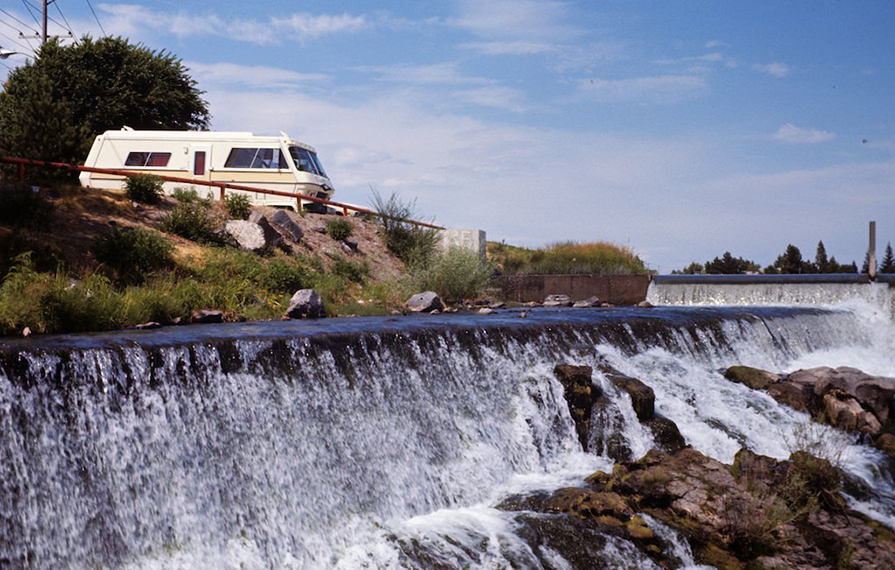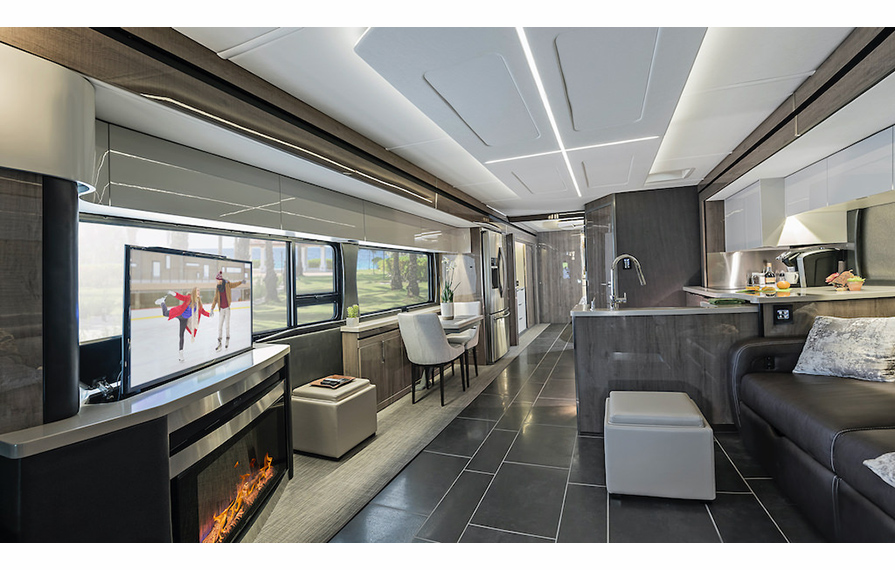
So, You Want to Rent an RV?
So, You Want to Rent an RV?
An experienced RVer shares insights for first-time renters.
By: Don Cohen

If you are interested in trying out RVing, renting first can help you decide what kind of RV makes the most sense for you and your family. And for those of us in the RV sphere, we welcome you to the joy of exploration!
Here are some tips for making sure you have a good experience in your RV rental.
Where to Go in Your RV Rental?
Start with thinking carefully about your destination first. That may help determine what kind of RV you’ll want to rent. For instance, if you’re looking to go into a national park for a week or camp near a lake, a towable might suit the bill if your vehicle has enough pulling power and a hitch. It can be way more comfortable than tenting and provide you with a comfortable base camp. (If you are used to tent camping, here is a guide to transitioning into RVing.)
Adjust your thinking about time and distance. For first timers, a good range for a day is 300-500 miles which translates into a 6-to-10-hour day. Covering distance in an RV isn’t as fast as a car trip, so be conservative in thinking that a one-day drive to a destination may be a one-and-a-half-day RV trip with an overnight stay somewhere en route.
Also, consider slowing your travel down even more with maybe two or three stops before your big destination. Look at small towns, local or state attractions, and other unique adventures (like a half-day river trip or hike). Some of our most unexpected and vivid memories of 100,000 miles of RV travel have come at small, unexpected, and off-the-beaten path adventures (see Crystal Bridges Museum of American Art).
For novice RVers, you’ll probably be happiest staying at campgrounds with utility hookups and showers. The best directory is the Allstays app for iPad and iPhone. You can also check out their website at www.allstays.com. It’s the gold standard for finding campgrounds. (Here are some other apps to use for finding overnight stays.)
What Type of RV Rental to Drive?
The sweet spot for RV rentals is the Class C (bed usually overhead above the front cab). Almost all the ones in rental inventory are built on a Ford delivery van gas chassis. They’ll range in length from 20’ all the way up to 30’. The longer wheelbase models usually have more sleeping areas and galley space.
If you need more space, you can consider moving up to a Class A gas or diesel pusher. There are less of these in rental inventory, so you’ll have to do some digging around.
There are national rental companies like Cruise America, Apollo, and El Monte RV. Their inventory is generally filled with the RV equivalent of reasonably equipped airport rental cars. There are also local dealers who maintain rental units. Wanna go nuts? Then definitely check out Goss RV where you can rent rock-star style RVs. A Winnebago Horizon goes for $17,500 a week (and that’s not counting mileage and generator use).
There are two services that are the AirBnB of RVs. The first is Outdoorsy and their competitor is RVShare. These peer-to-peer (P2P) rental services are definitely worth looking at as they have more interesting choices. Initially envisioned for private parties to advertise their personal rigs, some dealers are also posting available inventory.
You can also find Winnebago RVs availble to rent by using this resource!
The difference between renting from a P2P private owner, versus a national or traditional dealer, is akin to eating at a chain restaurant versus a boutique bistro. With P2P rentals, you’ll likely find a more unique selection. For instance, most commercial rental companies don’t keep Sprinter-based motorhomes in their inventory. If they do, they are usually the lower-cost models and not the premium lines like Winnebago’s Navion and View models. You may very well be able to find better models via P2P and the driving and living experience can be significantly better. It is also a common way to test out a certain type of RV before committing to purchasing it.
Using Your Rental RV
The standard rental RVs aren’t too complicated to operate. Most of them have generators for off-grid boondocking, but all are set up for campground hookups. And speaking of hookups — when I was in college I worked at a mountaineering store. When someone came in to buy a backpack tent my advice (from experience) was to set up the tent in the yard before trying to do it in the woods where it’s getting dark, windy, and rainy. The RV equivalent of that is make your first night’s reservation at a campground that’s only a few hours down the road. Get there mid-afternoon, well before dark, and give yourself plenty of time at the campground to go through your rental rig’s systems. This will make for a much smoother trip.
For more tips, a fellow contributor has put together some great checklists for setting up and packing up an RV at a campground.
Before leaving in your rental, put together a small toolbox with duct tape, pliers, wrench, various screwdrivers, super glue, and scissors, and a first aid kit for you — if you’re all thumbs at repairs. And if you’re not a big Walmart fan - RVing will make you one. From free overnighting in some store parking lots, to groceries, and an RV parts section, Walmart is the ideal stop for picking up items you might have overlooked.

My parents’ first RV rental in 1971. Large for that time (25’), we had two flats and a holding tank backup in downtown Laramie. Yet, by the end of the trip my folks bought their first motorhome and over the next 20 years went through two rigs and traveled more than 200,000 miles.
What to Pay for an RV Rental?
Three things affect price:
- type of equipment
- mileage/use fees
- pick-up/drop-off charges
A quick look at the more affordable entry tier of Class C motorhomes looks like it is pretty common to pay about $1,500 a week, plus mileage. Campgrounds will run $40-$50 a night on average and you’ll also have fuel costs to consider. All-in, a weekly rental and camping will likely run $2,000-$4,000 per week.
The travel economics of renting a motorhome generally don’t compare as favorably as car/hotel travel - especially for short trips, but this is less about saving money and more about convenience and experience. It’s your bed every night. You’ve got an onboard sink/shower for quickly washing up. You’re not limited by suitcase size. And you can plan and enjoy meals easier.
Last summer, we wound up taking a couple of unforeseen car trips. Before we started RVing, we did a lot of big car trips. But every night as we rolled our bags into a motel, and every morning that we had to dress to go downstairs to breakfast, we sorely missed the comfort and convenience of having our own be-anywhere home.
 Caption: Our second home. Two bathrooms, adjustable king bed, 4K TV, and a fully packed fridge. Every night. Everywhere. Luxury hotel rooms definitely have lost their allure.
Caption: Our second home. Two bathrooms, adjustable king bed, 4K TV, and a fully packed fridge. Every night. Everywhere. Luxury hotel rooms definitely have lost their allure.
Bringing it Home
Good planning makes for good trips. Get out your calendar, maps, and laptop and plan out what your ideal trip looks like. Next, start searching online for the type of RV you’re interested in, price class, and availability. Once you lock in your rental, you should start your pre-trip preparation plans on what to take and what to do.
We started WinnebagoLife a little more than six years ago. Since then, the blog has added many new voices, ideas, and adventures. When planning your RV trip, try typing in the location you are planning to visit or other keywords into the search tool. Or choose the ‘travel’ category for broader destination ideas. You’ll see dozens of articles that will both inform and inspire you, written by experienced (or those who became so) RVers. It’s a terrific resource.
Comments
Comments on this post are moderated, so they will not appear instantly. All relevant questions and helpful notes are welcome! If you have a service inquiry or question related to your RV, please reach out to the customer care team directly using the phone numbers or contact form on this page .